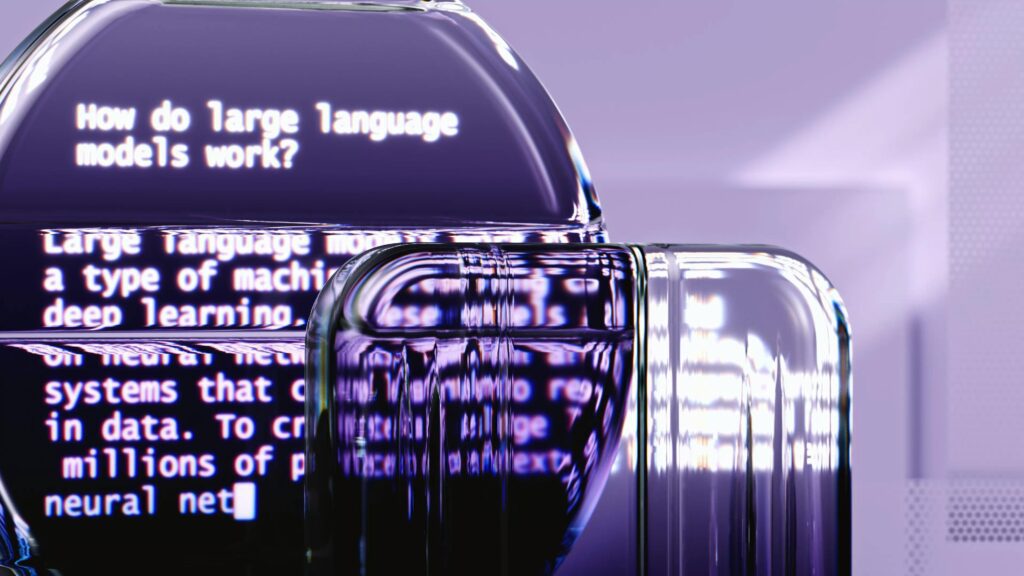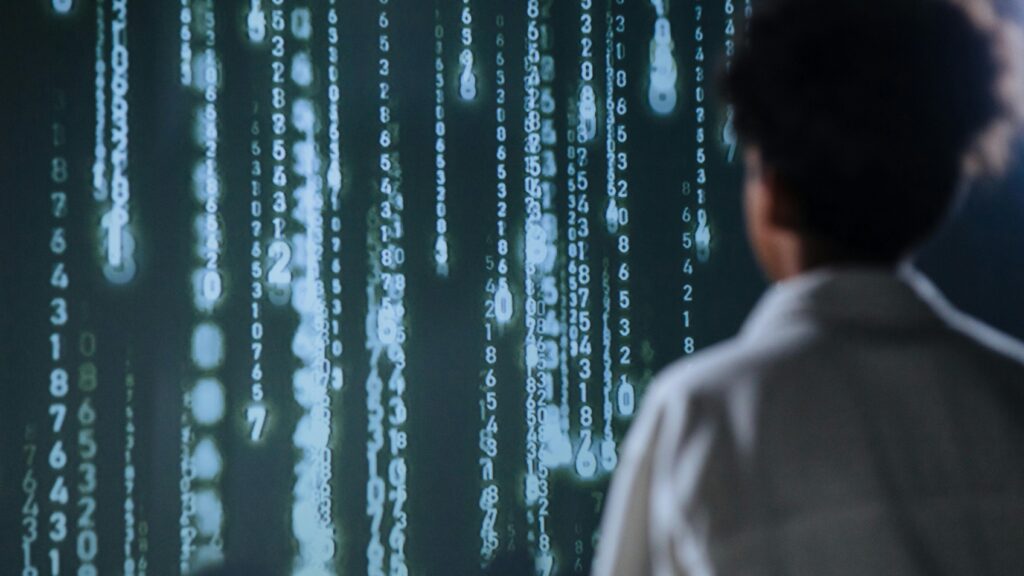Artificial Intelligence can be a powerful classroom ally, says teacher and AI educator Benny Pan — but only if humans remain at the heart of it. Benny shares his journey from clinical pharmacy to teaching with science communicator Ceana Priest.
Benny Pan’s fascination with machine learning began in an unexpected place — watching artificial intelligence (AI) interpret X-rays and help detect cancers. This insight into AI’s potential, paired with the fresh perspective of fatherhood, inspired Benny to leave his role as a clinical pharmacist and retrain as a teacher and AI educator.

After completing high school in Auckland, Benny earned a Bachelor of Pharmacy from the University of Otago in 2010 and later a Postgraduate Degree in Clinical Pharmacy while specialising in oncology and haematology with Health New Zealand | Te Whatu Ora. Intrigued by AI’s potential, he completed a number of courses – Google TensorFlow in machine learning, AWS cloud essentials and Google Data analytic course on Coursera, learning the foundations of coding, machine learning, and data analysis.
In 2014, fatherhood prompted a career change into teaching, and by 2018, he had completed a Graduate Diploma of Teaching from the University of Waikato. Today, Benny teaches physics and chemistry at Rototuna Senior High School in Hamilton—currently on sabbatical leave while testing a custom-built personalised AI assistant for high school students as part of his master’s research. He’s also a project lead at the Education Workstream in the AI Forum NZ.
AI resistance in the classroom
During his time as a teacher, Benny has seen a significant paradox: despite a surge in the use of AI tools among teachers, high school students show surprising resistance and a lack of interest, and fear at times. He attributes this to a static educational model: “A lot of high schools are still operating no differently from 20, 30, or even 50 years ago; teachers communicate the knowledge, and the students learn it, memorise revise it, regurgitate it.” While teachers are buried under “paperwork, replying to emails, a lot of bureaucracy,” students’ primary role remains simple: to learn and pass tests.
To test this, Benny challenged his physics class with a short AI course on prompting and feedback tools, but met resistance. “I was surprised. I thought kids would be on board because they are Gen Z, they are digital natives, [that] they would love AI, but wow, that was so hard.”
He believes this stems from their age and a focus on high-stakes exams. For many science students, their goal is clear: “Teach me what I need to learn, how to ace particular types of questions for the exam, and then I’ll do it.” Interacting with AI, however, is “highly proactive” and requires students to “flip their mindset” from “I will do what I am told to do” to “I will plan, test and iterate my strategies” which is hard.
“Students love structure. They love the dos and don’ts. But they don’t want to create new things that challenge the norm. They don’t want to critically assess right or wrong. They don’t like ambiguity. They just want to be told what to do. That’s quite alarming, to be honest, if you look into the future. Potentially, this lack of interest is going to get them over the line of high school and potentially over the line of university, and then boom, that’s the real world.” According to the World Economic Forum (WEF) report, critical and creative thinking skills are ranked very high for employment 2025-2030.
He warns that this widespread AI apathy poses a long-term threat to students’ future careers in a corporate world rapidly adopting AI. To counter this, Benny advocates focusing on AI education, starting not with students but with teachers and parents. “Educating the educator is the most important strategy before teaching the students.”
He suggests teaching the fundamentals of machine learning in a simple, “analogue” way, starting as early as Year 1 – much earlier than the proposed Ministry of Education AI-focused curriculum in 2028 aimed at Year 13 students. “There are so many fun ways to show students what AI is without actually talking about AI. So basically, we can start kids very young and very analogue and then progress.” In China and South Korea, students start learning about AI in primary schools.

Adoption of AI in education
Despite heavy hype around adopting AI, Benny sees the education sector’s inherent risk aversion as a valuable shield against the “fear-of-missing-out” (FOMO) that drives other organisations to invest heavily in AI without thoroughly examining its impact. Examples include Klarna and other businesses that raced to adopt AI to replace human tasks without considering the human and system issues. They had to revert their decision by rehiring the very people they let go.
“Before any new shiny tools, we always ask: ‘What’s the risk associated with that?’” he says, contrasting this with businesses’ focus on the productivity and profit. “So that risk aversion kind of protects us from adopting too fast, and too risky”
Although he acknowledges that it’s not easy to be cautious when the myth of AI’s inherent superiority over human intelligence is heavily pushed, saying it’s “…driving people to adopt AI, to use AI, to try and implement AI really, really fast because of the FOMO.”
But whether schools adopt AI or not, Benny argues that educators’ core role won’t be replaced; instead, it will evolve. Teachers are shifting from being knowledge transmitters to becoming guides and mentors who help students use technology wisely, critically, and ethically. And this evolution depends entirely on maintaining the human-centric nature of work, he says, stressing that AI should not replace it. “I would say education is a relationship-based practice of art. As a mentor and a guide, how are you going to work and support students without a relationship? It’s just not going to work.”

Replacement versus augmentation
For Benny, the key to navigating any AI tool is understanding the difference between human replacement and augmentation. He emphasises that replacement strategy at its core, aims to keep humans out of the loop—like using AI detection tools—have historically failed because leaders do not understand how machine learning works. They have paid for the AI detection tool and blindly trust its diagnosis, yet Benny argues that it’s disappointing that some students are forced to rewrite reports to a lower quality to pass AI detection.
Whereas augmentation is all about helping us do more and still keeps the human in the driver’s seat. For example, AI allows you to run 20 essays through the AI-powered feedback tool, generate 20 different feedback summaries, and highlight points according to the curriculum. “…and you read through the AI feedback before handing it out to the students. And that’s beautiful. Now, if you go through the replacement strategy, you wouldn’t have any clue about the assessment because you did not read it.”
Benny cautions against buying costly bespoke AI teaching platforms for lesson planning, quizzes or marking. “You pay thousands for a licence, but you are actually using an inferior AI. These are wrappers, meaning they use an inferior AI such GPT-4 and wrap it up with fancy interface or functions,” he says. While the interface might look “pretty”, performance can lag behind free tools like ChatGPT 5 and Gemini. Most run on GPT APIs, “but the model they choose—you don’t know. They could still be using GPT-4 while we are in five already.” With the right skills, he says, you don’t need fancy products; stick to one like Gemini, ChatGPT, or Claude AI. He suggests educators take a short, simple course on prompting to enhance AI literacy.
Conclusion
Ultimately, the successful integration of AI into education relies on two non-negotiable principles, according to Benny:
- Educators must stay in the loop and always have the final say, and
- The integration of AI does not compromise relationships.
“It’s easier said than done, to be honest. It’s really, really hard to do. When you have a tool that can write 10 times faster than humans, and when you have a tool that can analyse a 300-page document within two minutes, it’s really hard to put humans first. I know that from firsthand experience. I’m guilty too. When I’m really lazy, I’ll put machines first. But then I analyse later. When you have a human as the final say, then that’s fine.”
The technology must only serve to enhance the core practice of teaching, not replace it: “Make sure your AI use is augmenting or enhancing what you’re good at, but not jeopardising relationships or having the final say.”
As long as educators tick those two boxes, Benny says, AI can become a powerful classroom resource.
Resources
Benny Pan LinkedIn
Foundational AI course | Benny Pan | A teacher’s guide to AI in the classroom.
AI Glossary for Educators | Benny Pan
European Commission’s AI Act Despite New Zealand having no obligation to follow the first-ever legal framework on AI — the European Commission’s AI Act — Benny recommends it as a solid reference, as it says explicitly that AI shouldn’t be used to grade or profile students or prevent access to career paths based on AI student profiling, i.e. scholarship criteria assessments.
AI Diagnostic tool for teachers | Draft | Benny is currently collaborating with other educators on a free diagnostic tool. Based on the UNESCO AI Competency Framework, it tailors training materials to each teacher’s AI capability—for example, someone strong in content creation might next upskill in AI ethics. The final prototype will be released on the AI Forum New Zealand website.
Classroom activities
Teachable machine Train a computer to recognise your own images, sounds and poses. A fast, easy way to create machine learning models – no expertise or coding required. Great for 5+
Machine Learning for Kids A free tool that introduces machine learning by providing hands-on experiences for training machine learning systems and building things with them. Great for 10+
Ngā kupu
Ākonga – student, pupil, learner
Akomanga – class, classroom
Kaiako – teacher, instructor
Koi te hinengaro – intelligent
Mōhio – to know, understand, realise, comprehend, recognise
Rorohiko – computer
Wharekura – house of learning, school
[Sourced from Te Aka Māori Dictionary]

